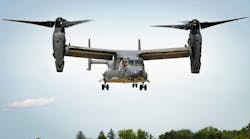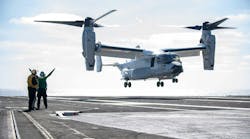August 19th represents different things to different people. For some, it is simply another average summer day, but for the men and women working in the air medical field, August 19th is a very special day - National Aviation Day. Celebrated annually on the birthday of aviation pioneer, Orville Wright, National Aviation Day recognizes the advancements of aviation and the overall history of flight.
Fittingly, for this National Aviation Day, I had the pleasure of sitting down with Kathleen Mayer, program director for the very first civilian air medical program in the U.S. - Flight For Life Colorado. Kathleen's career started as a flight nurse for Flight For Life in 1983, and although she has seen many changes in aviation and the air medical industry over the years, her commitment to saving lives is as strong as ever.
1) What is Flight For Life Colorado?
Flight For Life Colorado is a non-profit critical care transport program incorporating helicopters, airplanes and critical care ambulances to cover a nine state area. We benefit from corporate and private donations, that assist us with our capital equipment needs and funding for continuing education. There is never a question of finances when helping a patient; we will respond to anyone in need regardless of whether or not they can pay for the care. The minute we get the emergency call requiring our services, our pilots are out the door and headed skyward with our medical crew to bring excellent care to the most ill or injured patients - exactly what our training prepares us to do. Flight For Life Colorado has been accredited by the Commission on Accreditation of Medical Transport Systems since 1993.
The best way I can describe our service is to call it a marriage of transportation and medicine, two industries that are complicated on their own. Our staff also has to be able to communicate with their patients, many of whom have just experienced the most traumatic event of their life and, often times, have a hard time speaking at all. This added element of being a good communicator is perhaps what makes our staff the most impressive to me. They truly care about the people they are transporting and caring for, and they put their entire heart and mind into the work that they do.
2) Why was Flight For Life Founded?
Flight For Life was founded in 1972 for a number of reasons. First, men and women returning from the Vietnam conflict experienced firsthand the difference medical helicopters could make for a patient. That experience set expectations for a similar civilian service in the U.S. Second, there had been a possibility that the 1976 Winter Olympics would be held in Colorado. Although Colorado ultimately turned down the invitation to host the event, memories of the 1970 Wichita State plane crash, which left 31 individuals dead, showed just how necessary medical helicopters were in Colorado and the surrounding states. (A decision was made to take the Wichita State football players on the scenic route of the Rocky Mountains, which ultimately led to the crash into Mount Trelease, near Silver Plume, Colorado. If Flight For Life Colorado had been in place at the time of the crash, the medical helicopters may have been able to save more individuals that day. All of these events contributed to the realization that we needed an air medical team in Colorado, one that could be ready at the drop of the hat to save lives and transport individuals to trauma facilities across the Rockies, the Plains and beyond.
3) Do you only help patients in Colorado?
We help patients in several different states, with our main base being at St. Anthony Hospital in Denver. When we first started Flight For Life, we realized that it was not just individuals in Colorado who needed help; our neighboring states did as well. It is not about where the patient is located. It is about a patient needing our help and our team being able to respond. We make one-on-one connections with the individuals we transport because each one is a unique and important life. We like to say that we are "the best part of your worst day." And it is these patients that inspire us to do our job every single day to the best of our ability.
4) What kind of accidents do you encounter?
Colorado is known for its amazing mountain recreation, which mandates that we are well-prepared for backcountry and mountain accidents. Many of our most emotional and difficult transports have involved outdoor activities. We responded to a young man from a triathlon accident who only had about a 10 percent chance of living. If he had not been flown to a hospital, he would not be alive today. Not only is he alive, but he recently completed the triathlon event that was the arena for his injury in the first place. That was absolutely amazing! It is wonderful for us to know that patients are going to live, but even more incredible when we hear the stories of how far they have come since their accidents.
Five years ago, in August 2010, we had another very traumatic incident where a Colorado man, Craig Horlacher, had been on a fishing expedition when he encountered a steep spot in the river and was severely injured. He spent 5 nights and 6 days wallowing in the water, barely conscious and battling hypothermia. When his wife became alarmed that he had not returned home, she alerted Flight For Life Colorado and our team went to find him. Fortunately, the flight team got there just in time. Craig, most likely, would not have made it another day. In fact, he probably would only have lived for a few more hours. Flight For Life Colorado made Craig's rescue possible, and the dedicated crew and staff are the reason he is alive today.
5) What would you like individuals to remember on this National Aviation Day?
On days like today, we most often remember those who have contributed to the field of aviation in a momentous way - Buzz Aldrin and Neil Armstrong, Anne Morrow Lindberg (wife of Charles Lindberg), Benjamin O. Davis, Jr., Daniel "Chappie" James, Jr. (a Tuskegee Airman). I would ask that while you remember these individuals, please also remember the men and women who are not in the history books - the men and women that climb aboard medical helicopters and airplanes every day to save the lives of others. I am honored to work with these heroes, and wish each and every flight team out there a very Happy National Aviation Day.
Want to learn more?
Check out Flight For Life Colorado at www.flightforlifecolorado.org/ or learn more about air medicine at www.aams.org.
Check out Flight For Life Colorado at www.flightforlifecolorado.org/ or learn more about air medicine at www.aams.org.
By Blair Beggan, Director of Communications, The Association of Air Medical Services



